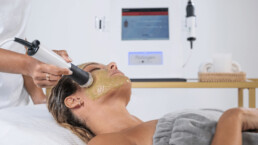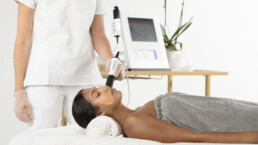Facial Treatments 101: Choose the Best Facial for You
Facial treatments are an excellent way to improve the overall health of your skin while also relaxing and letting go of all your stress. With so many options available it can be tough to know what each type of facial does and which will be best for you.
To help you choose the best facial treatment for your unique needs, we’ll review the techniques and benefits of four of the most popular types of facials:
- European facials
- Hydrating facials
- Oxygen facials
- Facial peels
Key Benefits of a Facial Treatment
There are a variety of facial treatments available, and though they differ in technique, active ingredients, and overall results, they still provide many of the same benefits.
- Deep cleansing: Facials help remove oil and dirt from deep within your pores, leading to fewer blemishes and glowing skin.
- Better blood circulation: Facial treatments can stimulate circulation, which helps bring more oxygen and nutrients to your skin and reduces puffiness.
- Moisturizing: Facials hydrate the skin to make it supple and reduce issues such as flakiness and irritation.
- Reduced scarring: Acne is frustrating enough on its own, but it can also leave long-lasting scars. Facial treatments can help reduce the appearance of scars and even out skin tone.
- Stress relief: Getting a facial is an act of self-care. It’s a great way to relieve stress while also improving the look and feel of your skin.
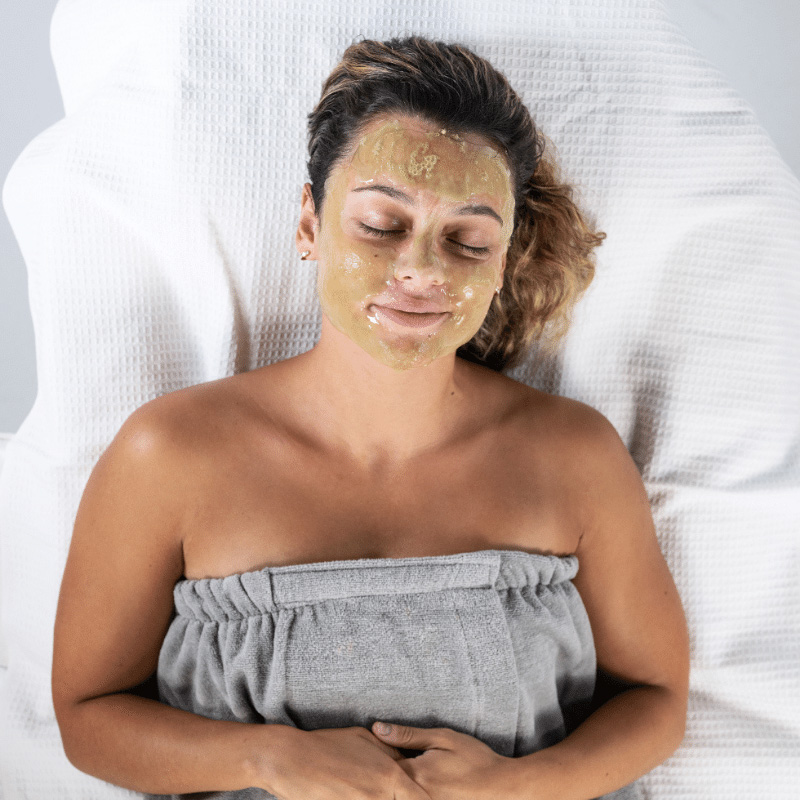
What is a European Facial?
A European facial, also called a classic facial, is the most common facial treatment. It’s an excellent option if you’re looking for a way to de-stress and pamper yourself. Your esthetician can customize the type of products they use during the treatment, such as moisturizers, and masks, to suit your specific skincare needs. This makes European facials appropriate for all skin types.
Geneo facials are an innovative take on the European facial method, and offer immediate and long-lasting results. Learn more about Geneo facial treatments here.
What Does a European Facial Include?
A European facial includes: Steaming, cleansing, exfoliating, massaging, masking, and moisturizing.
A typical European facial starts with an esthetician gently steaming your face to open your pores. They then cleanse and exfoliate your face to remove impurities and dead skin cells that can cause a dull complexion.
Next, they perform a facial massage that stimulates circulation and helps give your skin a healthy glow. It’s also deeply relaxing. The final steps are a face mask followed by a serum or moisturizer to condition your skin.
How Much Does a European Facial Cost?
A classic European facial costs between $50 and $120, depending on how basic you want the services to be. Many salons offer tiers for classic facials, allowing you to customize the services you want. For example, you may be able to choose a simple steam, cleanse, and moisturize option or a more involved process that includes all the steps covered above as well as extractions.
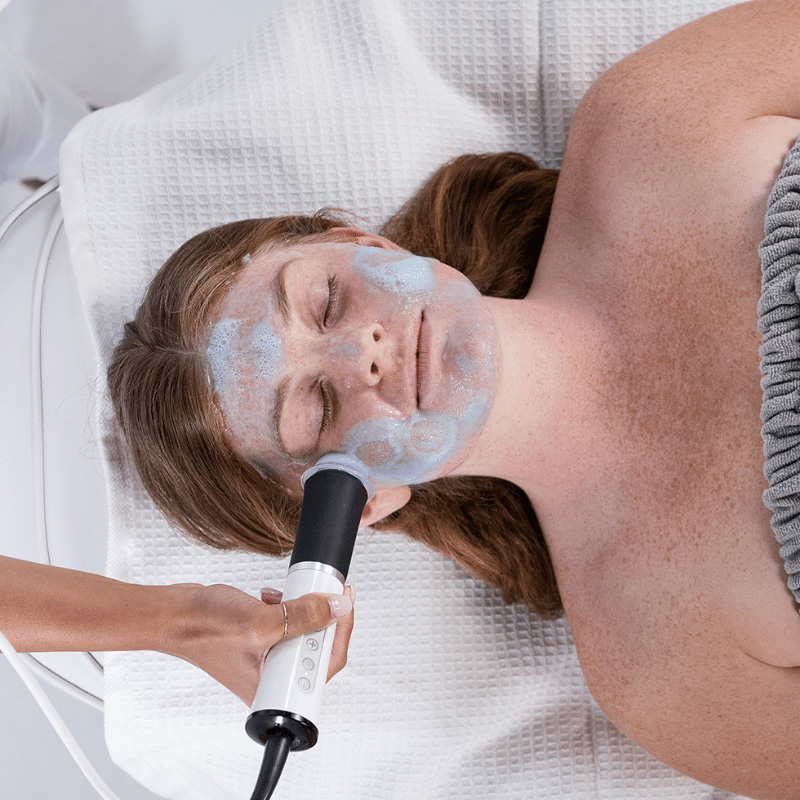
What Is a Hydrating Facial?
A hydrating facial is a treatment that’s focused primarily on deeply moisturizing the skin to reduce the look of fine lines and banish flakiness and irritation. A hydrating facial can benefit all skin types, though it’s especially helpful if you have naturally dry or combination skin. It’s also a great option during the wintertime. Cold, dry air saps moisture from the skin, and this type of facial provides an instant dose of skin-soothing hydration.
Good to know: A hydrating facial is different from a hydrafacial. A hydrafacial is a type of hydrating facial performed with a proprietary device that removes impurities with suction.
If you’re looking for deep, lasting hydration, Geneo’s Hydrate Facial uses innovative technology to enhance moisture retention, strengthen the skin barrier, and increase skin metabolism for a replenished and revitalized complexion.
What Does a Hydrating Facial Include?
A hydrating facial includes: Deep oil cleansing, exfoliation, steaming, masking, and moisturizing.
A hydrating facial has many of the same steps as a European facial, but it’s done with products specifically chosen for their moisturizing properties. Your esthetician will begin with a deep oil cleanse, followed by exfoliation to remove dead skin cells and steam to open your pores. This puts your skin in the best condition to accept the rest of the treatment. For the last step, you’ll receive a hydrating mask and a rich moisturizer to lock in all the hydration.
How Much Does a Hydrating Facial Cost?
A basic hydrating facial can be done at home for just the cost of the materials used, while treatments done professionally can range from $60 to $200.

What is an Oxygen Facial?
An oxygen facial uses highly pressurized oxygen loaded with nutrients your skin needs. The oxygen is applied directly into the outer layer of skin on your face and neck. This nourishing treatment can promote collagen growth to make your skin more supple and reduce wrinkles and other signs of aging. It works well on all skin types.
While Geneo facials are not considered oxygen facials, oxygenating the skin is a key factor in the innovative technology and enhanced processes used in all Geneo facials.
Instead of applying pressurized oxygen to your skin, “Geneo’s oxygenation process triggers the body’s natural, physiological process of producing oxygen to increase oxygen levels internally within skin. Oxygen is carried to the surface of the skin where the heightened levels of oxygen prep the skin to absorb nutrients throughout the rest of the facial treatment.”
Click here to learn more about how Geneo facials work, and how our technology provides significantly enhanced results compared to other facial methods.
What Does an Oxygen Facial Include?
An oxygen facial includes: Cleansing, exfoliation, pressurized oxygen treatment.
As with most treatments, an oxygen facial starts with cleansing and exfoliating to prep the skin. Your esthetician will then use a device to apply nutrient-rich, pressurized oxygen to your face and neck, rejuvenating and nourishing your skin.
How Much Does an Oxygen Facial Cost?
An oxygen facial usually costs between $100 and $200, though some clinics charge as much as $500.

What is a Facial Peel?
A facial peel, sometimes called a chemical peel, is a treatment that removes layers of skin. It’s done with a chemical solution commonly made from lactic, salicylic, and glycolic acids. After a peel, your skin grows back smoother, more evenly toned, and younger looking. A peel can also make scars less visible.
What Does a Facial Peel Include?
Unlike other facial treatments which are done by an esthetician, a facial peel (especially a deep peel) is typically performed by a dermatologist as an outpatient procedure.
There are three levels of chemical peel – light, medium, and deep. The three levels refer to how many layers of skin the peel removes. The more layers removed, the more effective the peel. However, it’s important to keep in mind that medium and deep peels can leave your face red for several weeks as the skin heals to reveal a smoother, fresher complexion.
Facial peels are not used in Geneo facials.
How Much Does a Facial Peel Cost?
Chemical peels cost anywhere from $100 to $6,000, depending on what level of peel you’re getting and the clinic you go to. Light peels are the least expensive, and deep peels are the most expensive.
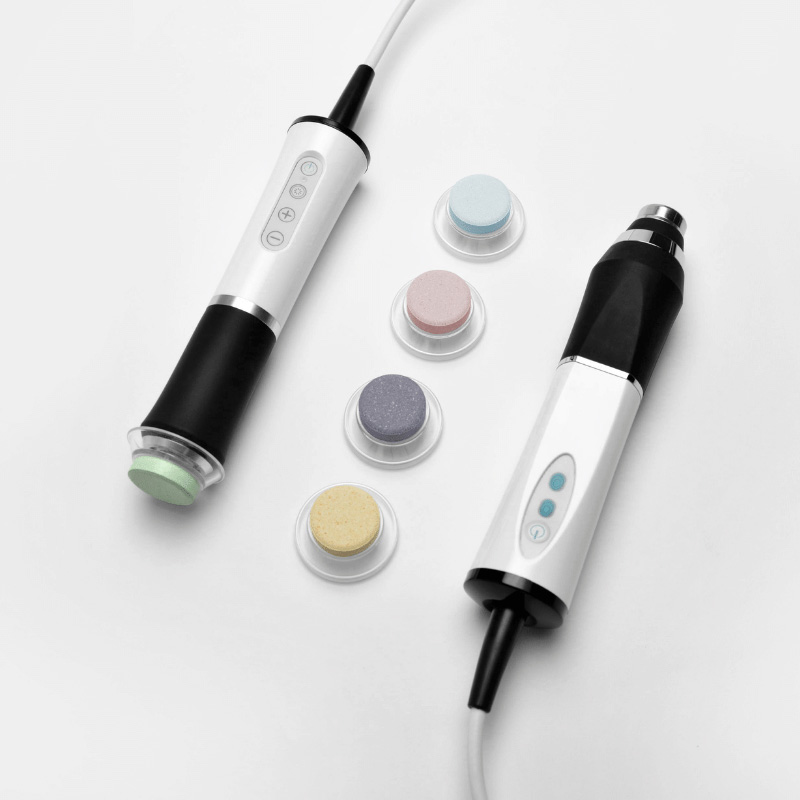
What Kind of Facial Should I Get?
The best facial treatment for you will depend on your skin type, budget, and what specific results you’re looking for.
- To moisturize dry skin, try a hydrating facial.
- To reduce scarring, get a facial peel.
- To rejuvenate skin, look for an oxygen facial.
- To relax and get healthy-looking skin, try a European, hydrating, or oxygen facial.
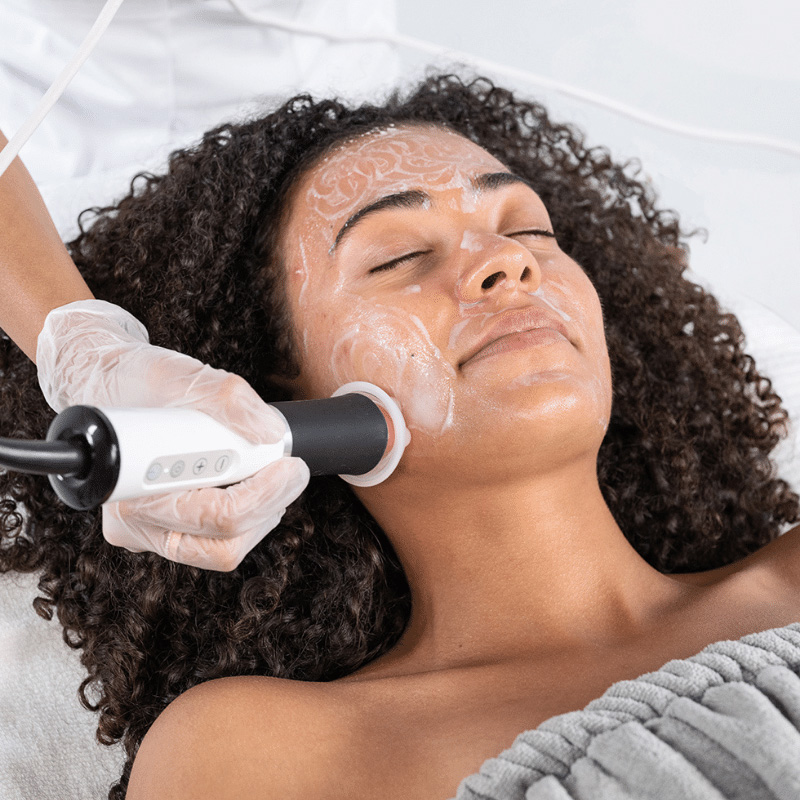
The Geneo Facial Difference
With most facials, you might receive a different experience at nearly every spa you visit–including varying ingredients, different facial methods, and a wide range of results.
The Geneo facial is different, offering a very high standard with incredible results, no matter what spa or esthetician you receive your facial from.
To help you find the perfect facial, Geneo offers a range of personalized, non-invasive facial treatments that cater to every age and skin type. Whether you’re looking to brighten and rejuvenate, detox and balance, or smooth and firm, we have the perfect facial treatment for your needs.
Click here to find a Geneo Provider near you and schedule your Geneo facial treatment today.
Interested in offering Geneo facial treatments to your clients? Learn more about becoming a Geneo Provider here.
Skin Exfoliation 101: A Guide to Skin Renewal
With so many skin products on the market, it can be easy to forget about one of the simplest and most important skin care techniques: Exfoliation! Performing a home skin care routine without proper exfoliation is like trying to create a new painting on top of an already used, dirty canvas. Freshly exfoliated skin provides the ideal foundation for the rest of your skin care routine.
In this article, we’ll review why exfoliation is so essential, cover popular exfoliation methods, share ways to exfoliate your skin at home, and how at-home exfoliation compares to spa quality exfoliation.
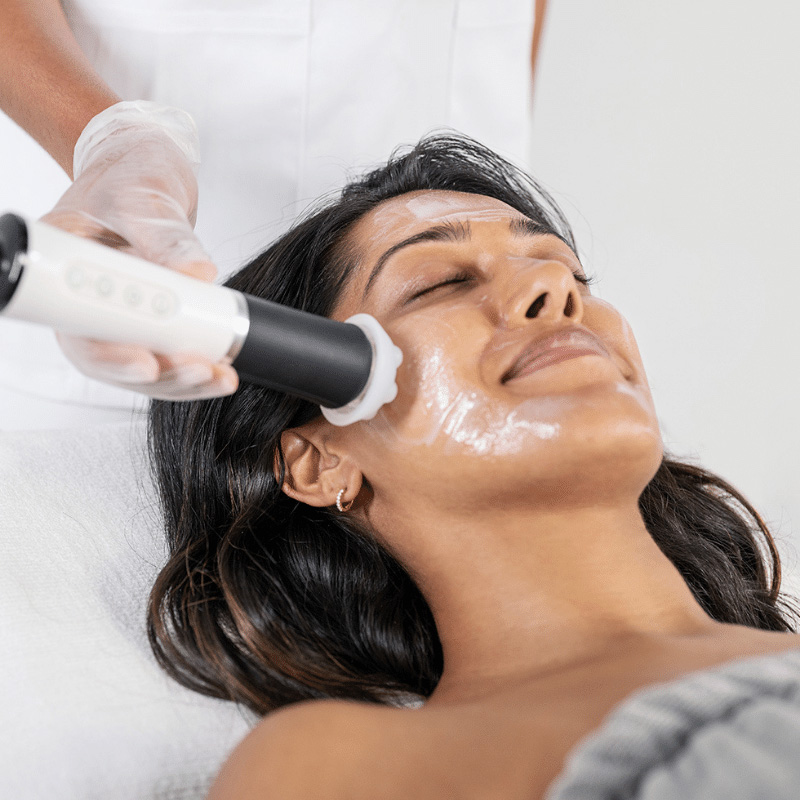
How Does Exfoliation Work?
Skin cells don’t live forever, unfortunately. In fact, millions of cells die every day, but new ones are always ready to replace them. This cycle is called desquamation.
Ideally, all old skin cells would shed on their own to allow room for the fresh cells to replace them; however, they sometimes need a little help. That’s where exfoliation comes in.
Exfoliation is the process of manually removing dead skin cells using chemical applications, grainy scrubs, or scrubbing tools. When you remove the barrier of dead skin cells, you reveal the fresh, healthy cells underneath.
Exfoliation Benefits
Exfoliation can benefit your skin in several ways:
- Uncovers fresh skin cells, and these absorb skincare products better. This means your moisturizers, serums, and other products work more effectively.
- Removes dead, grainy skin cells to reveal a brighter complexion.
- Stimulates collagen production, which is key to younger-looking skin.
- Reduces breakouts by removing dead cells that can clog pores.
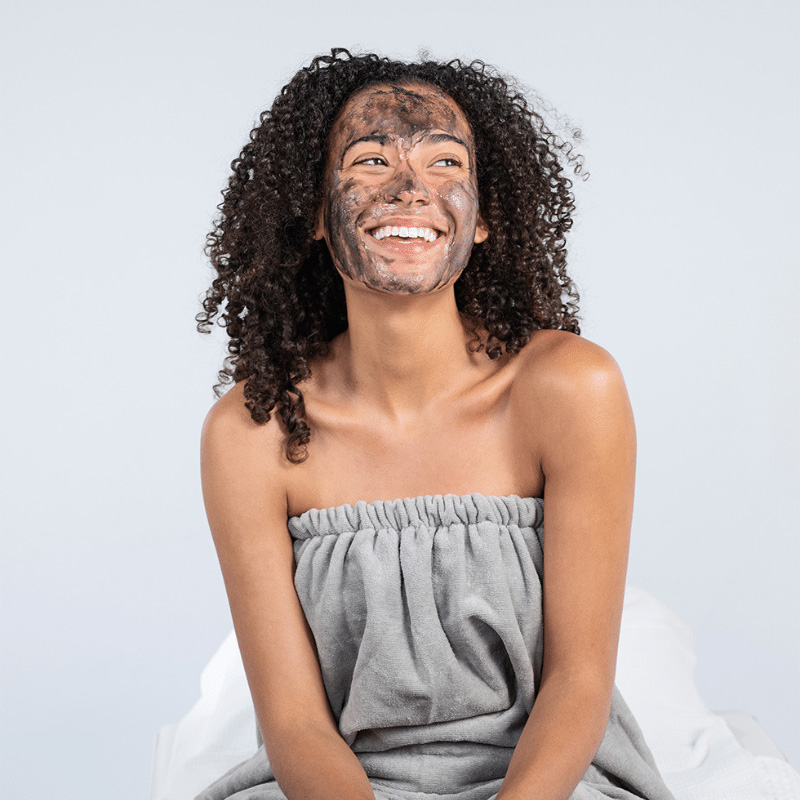
How to Exfoliate Your Skin
Exfoliating your skin isn’t difficult, but it’s important to be gentle on your skin when doing so.
If you’re at a spa, your esthetician will know exactly what to do; but there are still some steps you can take to make sure to protect your skin while getting it squeaky-clean and exfoliated.
How to Exfoliate Your Skin at Home
It’s easy to create an at-home exfoliation skincare routine. Before you begin, it’s important to know that you should only exfoliate healthy skin. If you have painful acne, a cut, or a sunburn, you can exfoliate while avoiding that area carefully or wait until your skin has healed.
The face is the most common area to exfoliate, but you can also use it to remove old skin cells from the rest of your body to reveal fresh, smooth skin.
Follow these steps to add exfoliation to your skincare routine:
- Cleanse the area: Use your usual face or body wash to clean the area you want to exfoliate.
- Apply exfoliant in a circular motion: Whether you use a scrub, exfoliating serum, or a brush, the key to proper exfoliation is using the product gently and in a circular motion. It doesn’t take much pressure to remove dead skin cells, and being too forceful can cause redness and irritation.
- Rinse: Splash the area you exfoliated with water or use a wet cloth to completely remove all the dead skin cells and any product you used.
- Moisturize: Now that your skin is clean and refreshed, it’s the perfect time to hydrate with a gentle moisturizer. Your skin may feel a little sensitive after exfoliating, so choose a moisturizer without harsh ingredients like alcohol or fragrances.
While facials are the most common skin treatment performed at spas, you can also receive exfoliating skin treatments on other parts of your body as well.
If you’ve never had an exfoliating facial or other treatment before, or have not used exfoliating products at home, make sure to communicate that to your esthetician so they can use their most gentle ingredients and techniques.
It’s also important to avoid exfoliating facials if you have a sunburn, painful blemishes, or any wounds on your face or other skin areas that you would like to treat.
Most facials and skin treatments involve an exfoliation step, so make sure you work with your esthetician to select the facial treatment and exfoliation method that will work best for your skin.
There are many different kinds of exfoliation methods available in professional spa treatments: from physical methods like microdermabrasion that use a sand-like grit to slough away old skin cells; to chemical methods like a glycolic acid that lifts away dead skin cells.
Geneo facials use natural ingredients in the Geneo OxyPod, which react with the Geneo Primer Gel to provide gentle, non-invasive exfoliation and trigger the oxygenation process within the skin.
Even better, there is a personalized Geneo facial for every skin care need, so this gentle, innovative skin care treatment works for everyone.
How Often to Exfoliate
How often you exfoliate will depend on your skin type, and whether you’re exfoliating your skin at home or with a professional treatment.
- If you have sensitive skin, you should exfoliate no more than once a week. If your skin starts to feel irritated or extra sensitive, reduce the frequency to once every other week.
- If you have oily skin, you can exfoliate three times a week or even every other day if you don’t notice any sensitivity. You’ll likely see a reduction in breakouts once exfoliation becomes part of your routine.
- If you have dry skin, exfoliating one to two times each week will help keep your skin fresh without causing irritation.
- If you have combination skin, you can exfoliate your entire face about twice a week. You also have the option to exfoliate just your oily areas more often if needed.
Note: If you receive a spa exfoliation treatment, you may want to skip your next at-home exfoliation treatment, especially if you have sensitive skin.
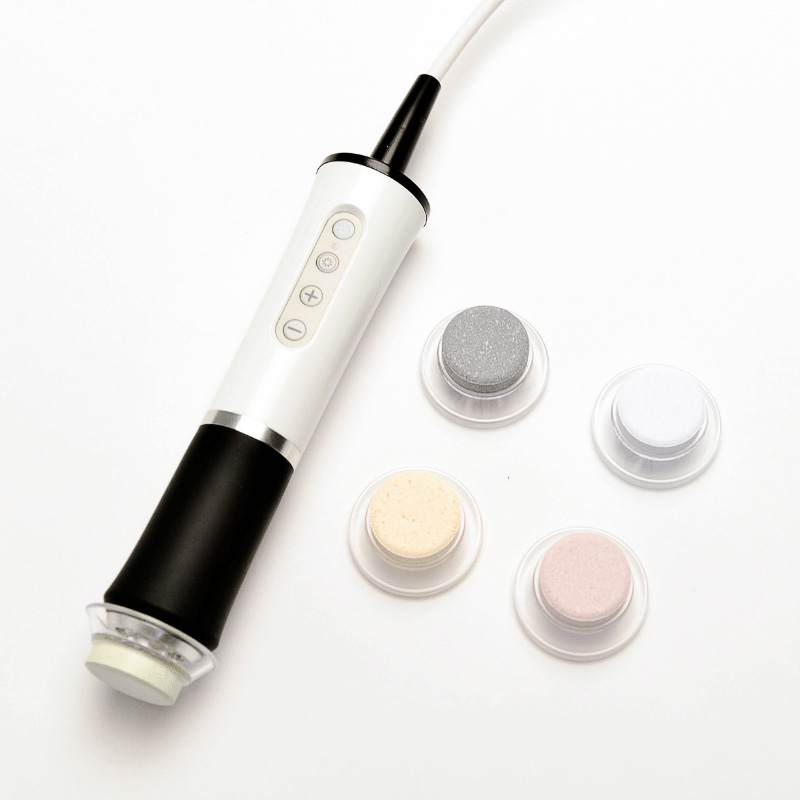
Exfoliation Tools and Products
There are two main types of exfoliation: physical and chemical. Physical exfoliators include scrubs and dry brushes, and chemical exfoliators include alpha and beta hydroxy acids.
We tend to think of chemicals — especially acids — as harsh, but chemical exfoliants are often gentler on the skin than physical ones. The strength of the chemical exfoliant is predetermined and applied in a controlled manner. Physical exfoliation is sometimes done too aggressively, especially by those new to exfoliating.
Whether you use physical or chemical exfoliation, keep in mind that your skin should never be red and sensitive after your exfoliate. If it is, this is a sign that you used a physical exfoliant too aggressively, are exfoliating too often, or your skin is too sensitive for the chemical exfoliant you used.
Skin exfoliation scrub
An exfoliating scrub is a substance that contains tiny, mildly abrasive particles that remove dull skin cells.
At Home: Scrubs are typically targeted to either the face and neck or the body, and it’s important to use them for their intended purpose. The skin of your face is more delicate and sensitive than the skin on the rest of your body. A body scrub will be too harsh for your face, and a facial scrub may not be abrasive enough for the rest of your skin.
At the Spa: Some spa treatments use an exfoliating scrub, especially on areas of the body other than the face. Scrubs are especially common in pedicures, since calloused areas like the feet can better handle the abrasive scrubbing.
Dry brush exfoliation
Dry brushing has been around for thousands of years, so it’s a thoroughly proven method for effective exfoliation, stimulating circulation and may even improve lymphatic drainage. Dry brushing removes dead skin cells with a stiff-bristled brush that you gently rub over the skin in a circular motion.
At Home: You can use this exfoliation method for both your face and your body, often with the same brush. Just be sure to choose a brush that is soft enough to use on your face without causing irritation.
At the Spa: Some spa treatments offer dry brushing, especially in combination with body or facial massage. Make sure your esthetician is very practiced with the treatment, and if the pressure feels too intense or painful at any time, speak up. Dry brushing can damage your skin if performed with too much pressure, or on overly dry, damaged, or sensitive skin.
Chemical exfoliation
Unlike a scrub or dry brush which physically removes dead skin cells, chemical exfoliants work by using acids to break down old skin cells. The acids used are usually either AHA or BHA, or a newer ingredient type known as PHA.
AHA exfoliation uses alpha hydroxy acids, BHA uses beta hydroxy acids, and PHA uses polyhydroxy acids. While they may sound a little intimidating, these ingredients are often naturally sourced (like the most common AHA, citric acid).
All of these chemicals work in similar ways to remove dead cells and smooth out skin. However, BHA exfoliation penetrates deeper into the pores, making it ideal for unclogging pores in acne-prone skin.
At Home: Since some chemical exfoliants can be irritating, make sure to test them out on a small area of your skin before applying it all over. Avoid combining chemical exfoliants with ph-sensitive ingredients, like vitamin C, in your other skin care products.
At the Spa: Make sure to communicate to your esthetician if you have very sensitive skin. PHA exfoliants (like in the Geneo Hydrate Facial) are often gentler on sensitive skin than AHA or BHA, while providing improved results.
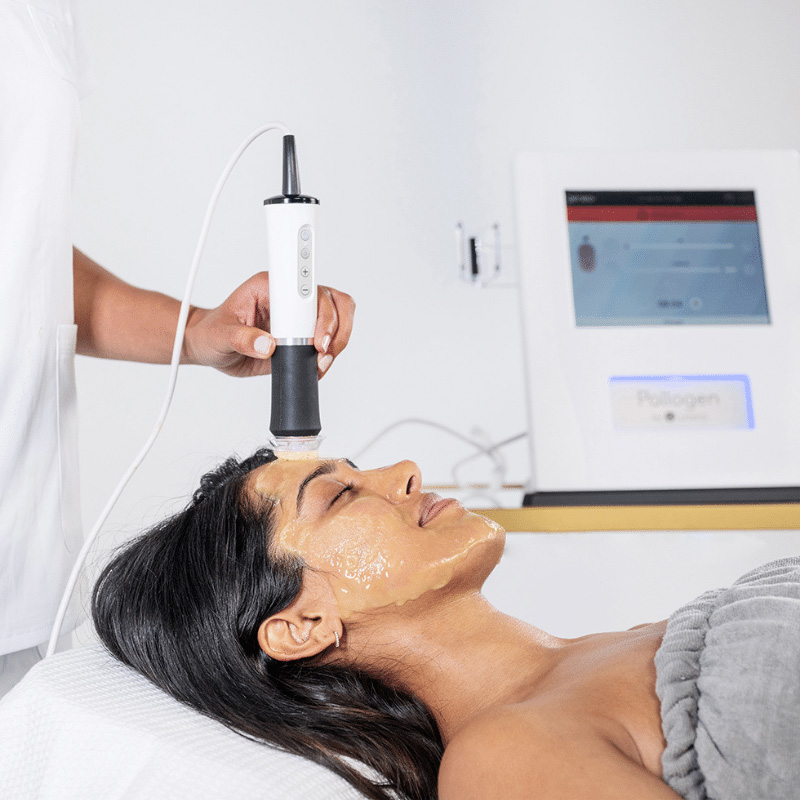
Geneo Exfoliation
Unlike other exfoliation methods, Geneo facials combine innovative technology with nourishing ingredients in the Geneo OxyPod and Geneo Primer Gel to deliver a gentle, non-invasive exfoliation facial experience and trigger the oxygenation process within the skin.
Learn more about our exfoliation process and how the Geneo facial treatment works here.
Where Can I Find the Right Exfoliation Products for Me?
Exfoliation is essential to creating an effective home skincare routine that will improve the look and feel of your complexion. To find the best skin exfoliation products for you, check out Geneo’s customizable facial treatments. No matter your age, skin type, or goals, you’ll find innovative skincare options that provide immediate and long-lasting results.
And if you're ready to have skin that looks and feels better, brighter, and healthier than it has in years, click here to find a professional Geneo facial provider near you.




